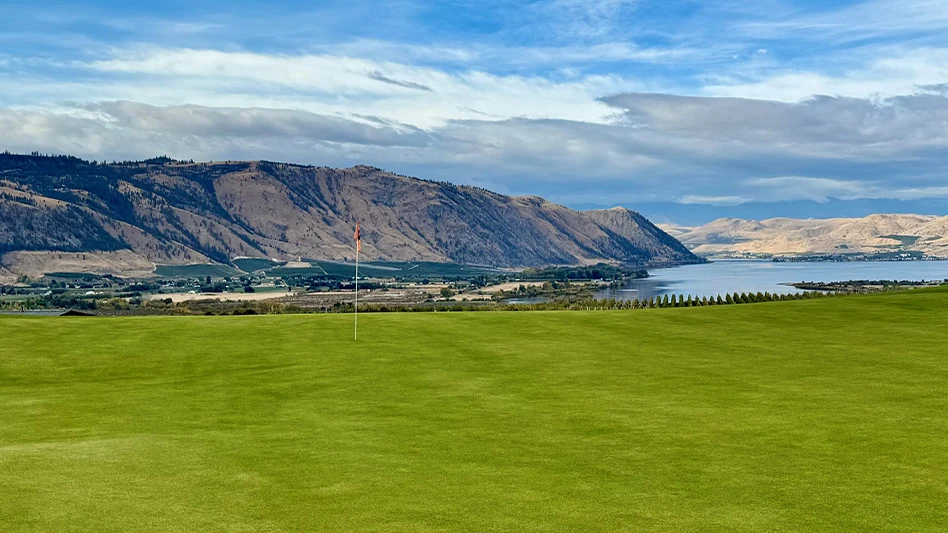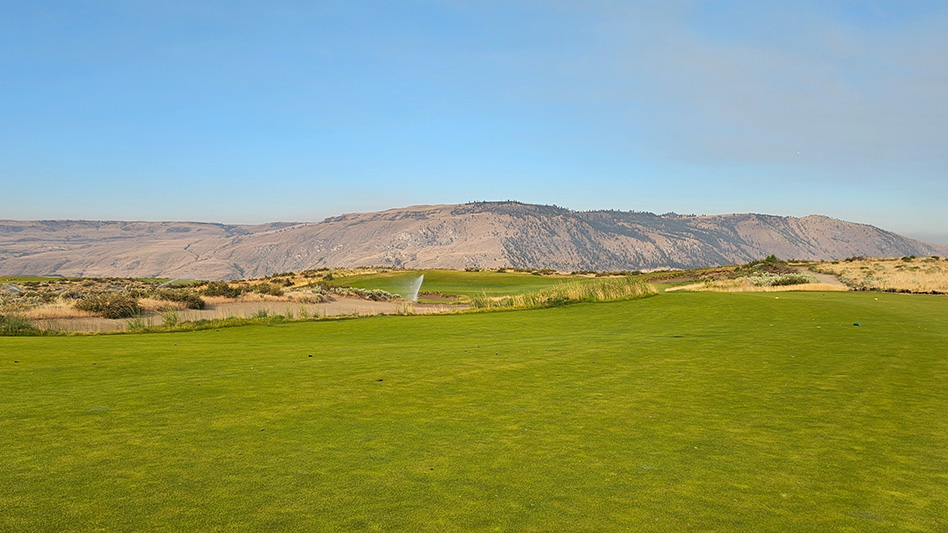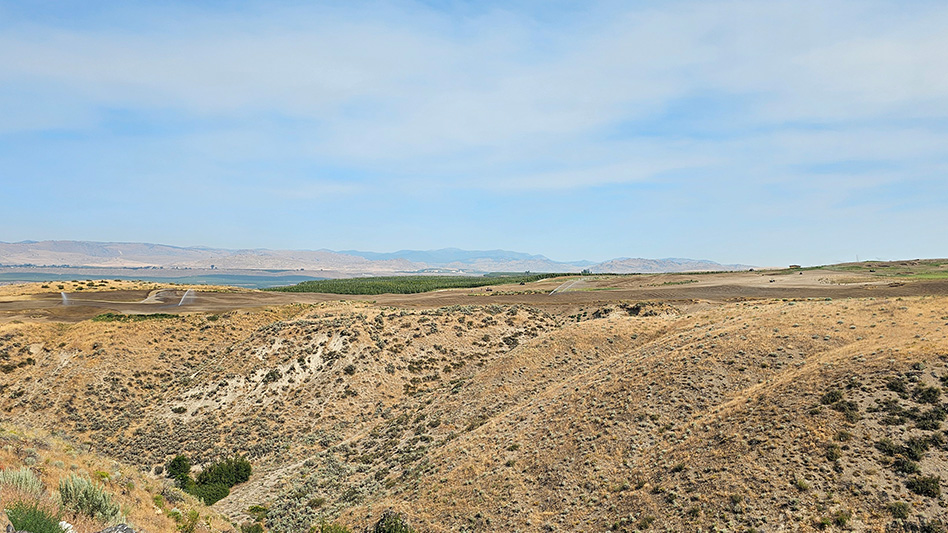
Courtesy of Gamble Sands, top; Matt LaWell (3), below
This course will have a brain.
Gamble Sands, a burgeoning resort located in Brewster, Washington, recently announced the name of its new 18-hole, David McLay Kidd-designed course: Scarecrow will open for public and resort-guest play on August 1, 2025, with tee times now available on the resort website.
Located near the apple and cherry orchards of the Gebbers’ family farm and overlooking the Columbia River Valley, McLay Kidd and design associate Nick Schaan have transformed a twisted saddle of rolling terrain and river-view ridgeline into the second 18-hole golf course, creating what golfers will soon come to find as a counterpart yet contrasting experience to Gamble’s original and award-winning Sands course. Scarecrow will play to a par of 71 and stretch to 6,900 yards.
With the property’s original McLay Kidd-designed Sands Course firmly entrenched as a top golf course in the United States, one may ask ‘how do you make the new course different while also making it a relative to the first course?’ McLay Kidd and Schaan had the same question. The answer started (and ended) with the land itself.

“This part of the site has higher, peakier spots that were more akin to classic sand-dune, sandhills type blowouts and we exposed some of those, we preserved some of those,” Schaan said. “The piece of land (for the new course) is just smaller. If you draw a circle around the first course, it sits on 350 to 500 acres depending on how you draw it. This new course sits on about 300 acres, and so it’s a lot more compact, things are a bit closer together. But the fairways are still wide — in some cases, they are even wider (than the original Sands Course). The whole golf course kind of climbs over this knob, through a saddle, up another knob, through a valley — you see a lot more of the river, hole after hole after hole. And you see a lot more golf that you’re not playing across the site.”
Besides the land, another key difference between Scarecrow and the Sands Course is the size of the greens.
“The greens are smaller,” Schaan said. “Once we got out onto the site and were walking around and looking at the tightness and the steepness of the contours versus the first course’s greens, the greens needed to be smaller to fit into the spaces that made good green sites. There’s still tons of turf around the actual cup-able areas because all the steeper contours that you can’t count as ‘green’ you can still use to roll a ball around. It’s different but the playability is the same (as the Sands Course).”
Big expansive views are a hallmark trait of Gamble Sands. So, too, are the large sand bunkers on the original course. McLay Kidd and Schaan took a different approach with the bunkering on Scarecrow.

“Gamble Sands has this big, open-expanse sandy character to it — it’s so massive that if we replicated that again in the same fashion, that alone would make the golf courses look similar. But doing that in the steeper terrain becomes cumbersome, so the sand areas are broken into chunks and smaller pieces and compositions of clusters instead of these massive sand areas,” Schaan said.
Gamble Sands will now feature two 18-hole McLay Kidd-designed championship courses, a 14-hole McLay Kidd-designed short course, a 100,000 square-foot Cascades Putting Green, multiple food and beverage options, and 40 new double-king luxury rooms opening in the spring of 2025, bringing the room count to 77.
Director of agronomy Josh Truan said earlier this year that he’s spending about 90 percent of his time overseeing construction on the new course.
“Most of the crew is college guys who I coached in football here in Brewster,” said Truan, who was promoted to his current position in February after five years as the Sands Course’s superintendent. And they all came back from college wanting jobs. I needed people just to mow, to do stuff. … Next year, we’ll ramp up. Most of the guys who did all the construction are going to transfer to maintenance guys, so they’re invested, which is cool.”

Latest from Golf Course Industry
- From the publisher’s pen: Conscientious of a bigger role
- Bernhard and Company partners with Laguna Golf Phuket
- Terre Blanche showcases environmental stewardship
- VIDEO: Introducing our December issue
- Bernhard and Company introduces Soil Scout
- Nu-Pipe donates to GCSAA Foundation’s Centennial Campaign
- GCSAA enhances golf course BMP tool
- Melrose leadership programs sending 18 to 2026 GCSAA Conference and Trade Show





